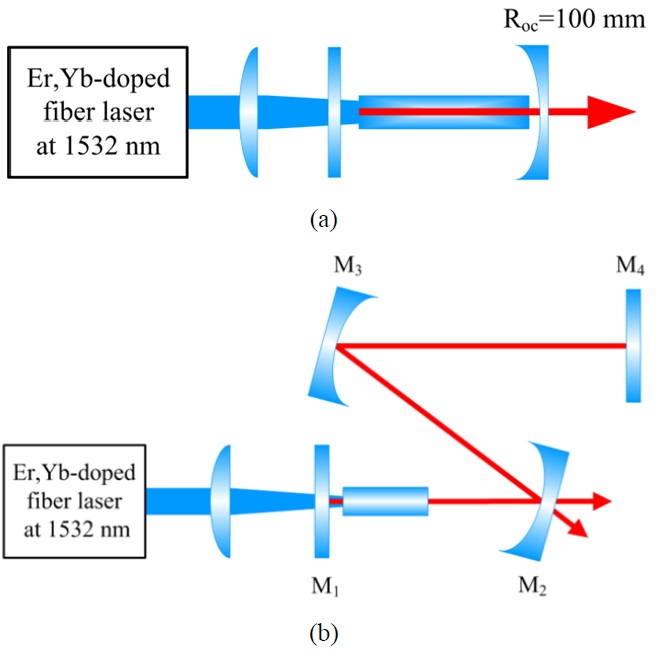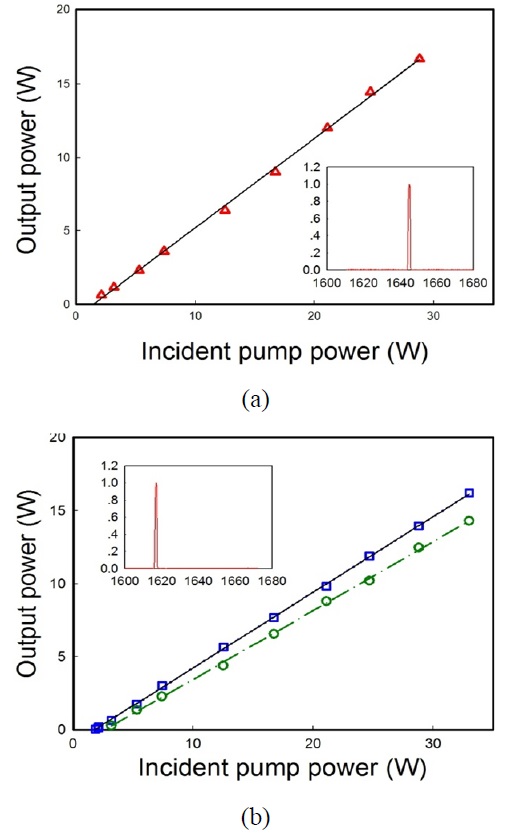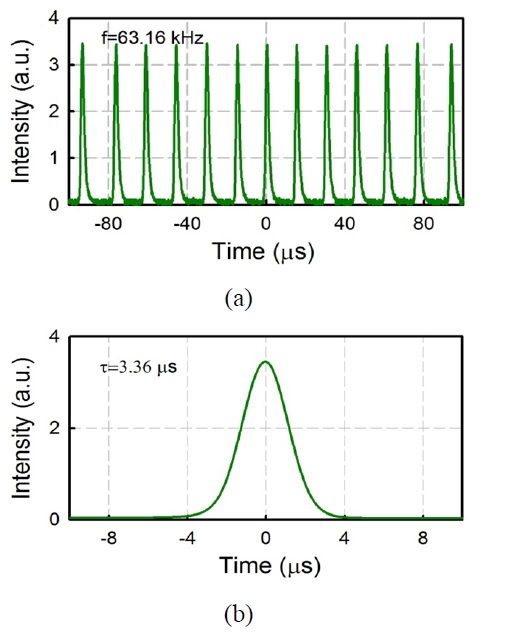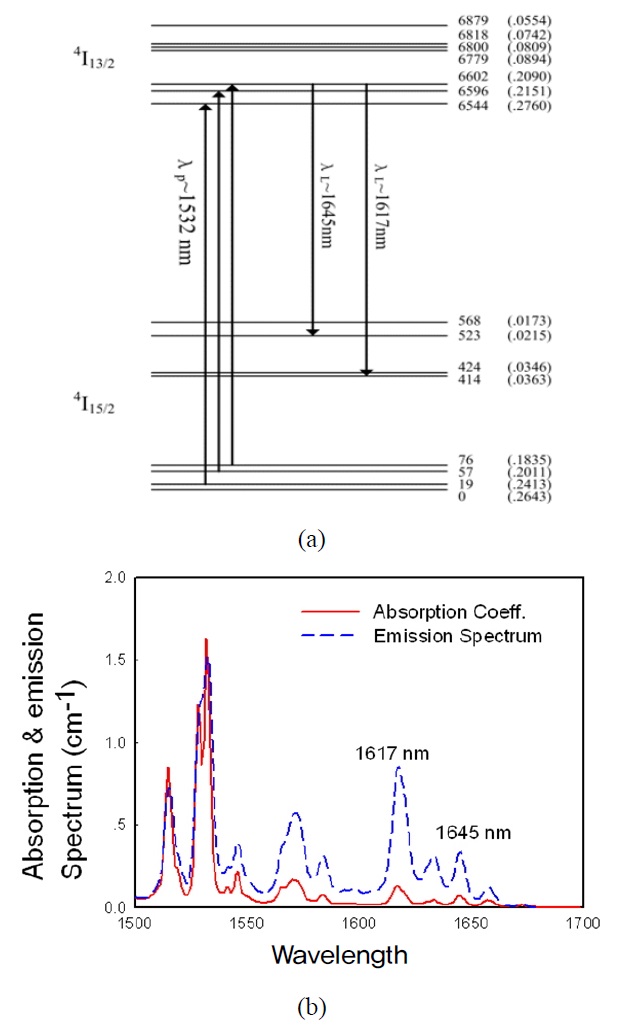



Polycrystalline ceramics as laser gain host materials have exhibited numerous advantages over single crystals, such as rapid and large volume fabrication, extreme flexibility in doping concentration, profile and sample structure, etc. [1,2]. Efficient laser oscillation of Nd3+- and Yb3+-doped optical quality YAG ceramics at ~1 μm are now routinely available with essentially the same laser efficiency as single crystals [3,4]. ~1.6 μm eye-safe wavelength regime lasers based on Er3+-doped gain media have many important applications in remote sensing, free space communications and as the pump source for generating 3-5 μm mid-infrared radiations via nonlinear frequency conversion. In recent years, high performance laser operations at this wavelength region are also demonstrated with ceramic structured Er: Sc2O3, Er:Y2O3 and Er:YAG gain materials [5-10]. Among these differential ceramic hosts, YAG is the most technologically advanced and popular one with spectral and thermo-mechanical robustness. First a composite Er:YAG ceramic laser was demonstrated with ~6.8 W quasi-CW output power and 56.9% of slope efficiency with respect to the absorbed pump power [5]. Later on, both 1645 nm and 1617 nm wavelengths were realized with noncomposite Er:YAG ceramic lasers and the output power was improved up to over ten watt [8-10].
With a linear ε~k relation (Dirac-like) of electron dispersion near the Fermi level, graphene was expected to possess the broad-band saturable absorption characterization. Since first experimental demonstration of mode-locking in erbium fiber laser with graphene as a saturable absorber (SA) [11], graphene has also been successfully employed as SA in Q-switched or mode-locked solid-state lasers with various rare-earth elements doped gain media, e.g. Nd:YAG ceramic [12], Tm:YAG [13], Tm:CLNGG [14] and Er:YAG single crystals [15] etc. and the broadband saturable absorption characterization has been confirmed.
In this paper, we report on power scaling and wavelength switching of cw operation and graphene passively Q-switched operation of an Er:YAG ceramic laser in-band pumped by a cladding-pumped Er,Yb fiber laser at 1532 nm. With an output coupler of 10% transmission, the ceramic laser yielded 16.7 W of continuous-wave output at 1645 nm for 28.8 W of incident pump power, corresponding to a slope efficiency of 61.0% with respect to the incident pump power. The lasing wavelength switched to 1617 nm when a T=20% output coupler was used, and 16.2 W of output power was generated at this wavelength for 33.0 W of incident pump power, corresponding to a slope efficiency of 51.8%. Graphene Q-switched operation of Er:YAG cermic laser at 1645 nm was also demonstrated with stable pulses of 30-74 kHz repetition rates and 1.5-6.4 μs pulse widths.
The pump source used in our experiments was a homemade double-clad ~4 m long Er,Yb-doped fiber laser with a 30 μm diameter (0.22 NA) Er, Yb-doped phosphorsilicate core surrounded by a 350 μm diameter pure silica inner-cladding with a nominal NA of 0.49. The fiber was double-end pumped via two beams of roughly equally split power of a high power 976 nm diode laser. Wavelength selection was achieved by employing an external cavity comprising an antireflection coated collimating lens and a volume Bragg grating (VBG) that was designed to have reflectivity of greater than 99% at a center wavelength of 1570 nm. The operation wavelength of the Er, Yb fiber laser was tuned, by changing the incident angle of the VBG, to match the absorption peak of the Er:YAG ceramic at 1532 nm. The laser output spectrum was analyzed using a 0.55 m monochromator with a specified resolution of
0.05 nm at 435.8 nm. Using this arrangement, the Er, Yb fiber laser yielded a maximum output power of 33 W at 1532 nm in a beam with M2<2 for ~160 W of launched pump power at ~976 nm.
Polycrystalline Er:YAG ceramic of 0.5 at.% Er3+-doping concentration used in our experiment was fabricated with a reactive sintering method (details can be found in [16] and references therein). The sample was cut and polished to have a dimension of 2×3 mm2 in cross section and 28.4 mm in length, both end faces were antireflection-coated at 1500-1700 nm. The pump absorption fraction under low pump power was measured to be ~98% for a single pass with negligible ground-state bleaching. The sample was then wrapped with indium foil and mounted on a watercooled copper heat-sink maintained at a temperature of 20℃ to allow for efficient heat removal. The laser output from the Er,Yb fiber pump laser was focused to a beam diameter of ~200 μm in the center of the ceramic using a 200 mm focal length lens. The confocal parameter of the pump beam inside Er:YAG was estimated to be ?36 mm.
The experimental setups of cw and Q-switched operations of ceramic Er:YAG lasers are schematically illustrated in Figs. 1(a) and (b), respectively. For the cw operation, a simple two-mirror cavity design was employed (see Fig. 1(a)). It comprised a plane rear mirror with high reflectivity (>99%) at the lasing wavelength (1600-1700 nm) and high transmission (>96%) at 1532 nm, and a 100 mm radiusof- curvature concave output coupler (OC) of 10%, 20% and 30% transmission at the lasing wavelength and with high reflectivity (>97%) at the pump light. The physical length of the laser resonator was ~45 mm. As shown in Fig. 1(b), the resonator of the graphene Q-switched Er:YAG ceramic laser was constructed with four mirrors into a z-shaped geometry with both folding half angles less than 5°, and the lengths of three arms of the cavity are 110 mm (M1M2), 80 mm (M2M3) and 60 mm (M3M4), respectively. M1 is one and the same plane mirror as the cw operation input coupler and M4 is also a plane mirror with high reflectivity at 1500-1700 nm. The concave mirror M2 had the radius of curvature of 500 mm and was coated with 5% transmission at both lasing wavelengths as the output coupler resulting in twice transmissions in one round trip while mirror M3 had a 100 mm radius of curvature and was coated with high reflectivity at 1500-1700 nm. Chemical vapor deposition (CVD) synthesized multi-layer graphene coated on the surface of the 1 mm thick quartz substrate was used as the saturable absorber and placed near mirror M4.
A comparative study was firstly conducted in the low-power pump level for the Er:YAG ceramic laser with three OCs of 10%, 20% and 30% transmission, and the emission spectrum was inspected employing the monochromator after each laser reached the threshold. With the 10%
transmision OC the laser emitted at 1645 nm while the emission wavelength switched to 1617 nm with the 20% and 30%-transmission OCs.
Based on the above investigation, laser performance of Er:YAG ceramic lasers were further examined. Fig. 2 shows the output power of the ceramic Er:YAG laser as a function of the incident pump power for 10%, 20% and 30% transmission output couplers. With a 10% output coupler, the laser reached threshold at an incident pump power of ~1.5 W and generated a maximum cw output of 16.7 W at 1645 nm under 28.8 W of incident pump power at 1532 nm, corresponding to an average slope efficiency of 61% and an optical conversion efficiency of 58%. The threshold increased to 1.62 W and 2.72 W for 20% and 30% OCs and at the same time the slope efficiency decreased to 51.5% and 47.1%, respectively. By using 20% output coupler, up to 16.2 W of cw output power at 1617 nm was obtained under 33 W of incident pump power, corresponding to an optical conversion efficiency of 49%. Q-switched operation of the ceramic Er:YAG laser was demonstrated at 1645 nm using graphene as the saturable absorber with 30-74 kHz repetition rates and 1.5-6.4 μs pulse widths. Stable pulse train of 368 mW average output power under 3.19 W pump power and 63 kHz repetition rate is shown in Fig. 3(a) and Fig. 3(b) shows a typical pulse with pulse width of 3.36 μs.
We have also examined the graphene passively Q-switched Er:YAG ceramic laser by using the 20% (30%) OC to take the place of M4 and substituting M2 with a 200 mm ROC mirror of high reflectivity at 1500-1700 nm and found it operating at 1645 nm but not at 1617 nm.
As a quasi-three-level system (energy levels of Er3+ schematically shown in Fig. 4(a)), Boltzmann distribution of Er3+ ions in the ground and excited state manifolds favors lasing at 1645 nm rather than 1617 nm when Er3+ ions transit from upper laser level 4I13/2 to lower laser level 4I15/2 although there is a higher emission cross section for 1617 nm wavelength (see Fig. 4(b)). Hence, supplemental methods are generally indispensible to produce 1617 nm laser oscillation, e.g. by inserting wavelength discrimination component into the cavity or by operating the laser at cryogenic temperature, resulting in the increase of system complexity and the cost. In fact, direct demonstration of 1617 nm oscillation is also possible via simply increasing the transmission of the output coupler. For 1.6 μm Er3+:YAG ceramic laser, the gain cross section
is the inversion parameter and
14% population inversion for 1617 nm wavelength [17]. The gain cross section of 1617 nm will surpass that of 1645 nm laser oscillation at 35% inversion, hence, the lasing wavelength is switchable through modulating the inversion rate of Er3+ ions in the gain media. Since at stable cw laser oscillation the round trip gain equals the whole loss of the resonator, i.e. σgNl=-ln(1-T)-ln(1-L) with T and L representing the transmission of the OC and other losses besides the transmission respectively, population inversion of Er3+ ions can be modulated by changing the transmission of the OC, and then the laser wavelength will be directly switched by using different transmission OC.
In conclusion, we report on power scaling for cw mode and graphene Q-switched operation of a polycrystalline Er:YAG ceramic laser resonantly pumped by an Er, Ybdoped fiber laser at 1532 nm. With an output coupler of 10% transmission, the ceramic laser yielded 16.7 W of continuous-wave output at 1645 nm for 28.8 W of incident pump power, corresponding to a slope efficiency of 61.0% with respect to the incident pump power. The lasing wavelength switched to 1617 nm when a T=20% output coupler was used, and 16.2 W of output power was generated at this wavelength for 33.0 W of incident pump power, corresponding to a slope efficiency of 51.8%. To our best knowledge, these are the highest output power for Er:YAG ceramic lasers. Laser performance of Er:YAG ceramic laser in terms of output power and slope efficiency should be further improved through optimizing Er3+-doping concentration and the length of gain sample and laser cavity design.



